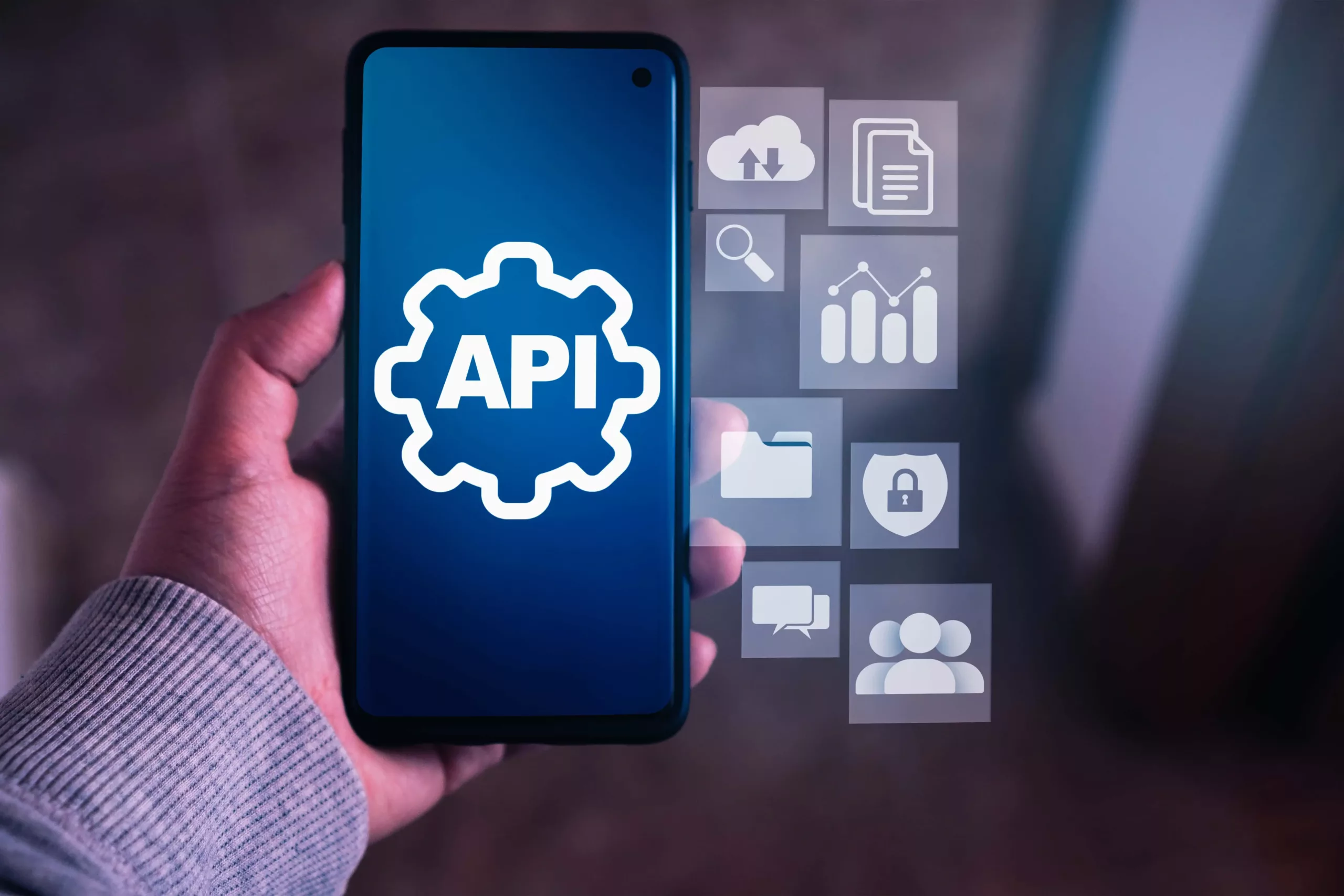Many web applications rely on APIs or application programming interfaces. They enable functions like authentication, authorization, data storage, data processing, and data visualization by allowing data to interchange between various software components. Scalable, secure, and user-friendly web application development requires APIs.
However, What is an API? What are the types of APIs and their architecture? What are the best practices and benefits of API? These are some questions we’ll discuss in this comprehensive backend tutorial for mastering API development.
So, without further ado, let’s dive in.
What Is An API?

An API is a software intermediary that enables two or more computer systems to communicate with each other. It lays out the guidelines for sending, receiving, and requesting data and the expectations of responses. An API also specifies the data type, size, structure, and format, such as XML or JSON.
What Are The Types Of APIs?
There are four types of APIs based on their function, scope, accessibility, and design.
Open APIs
Anybody can access Open APIs, commonly called Public APIs, without restrictions or authentication. They are typically made to offer open data or services to various clients and developers. For instance, developers can incorporate maps, tweets, and videos into their applications using the open APIs for Google Maps, Twitter, and YouTube.
Partner APIs
Partner APIs need to be licensed or authorized in some way before being accessed. They are typically made to give particular partners or clients access to unique data or services. For instance, PayPal API and Stripe API are partner APIs that allow you to integrate payment methods for e-commerce websites and online stores.
Internal APIs
Also known as Private APIs, Internal APIs are exclusively utilized within a system or organization. They are typically made to offer internal information or services to internal teams or parts. For instance, internal APIs for Netflix, Amazon, and Facebook enable data sharing and communication between various components of these systems.
Composite APIs
APIs, known as composite APIs, integrate different APIs into a single API. They are typically made to offer a uniform and streamlined interface for difficult or numerous tasks. For instance, the composite APIs provided by Twilio, Zapier, and IFTTT enable programmers to include phone, SMS, email, automation, and workflow features in their apps.
What Are The Types Of API Architectures?

APIs can also be grouped according to their architecture or protocol. This criterion identifies three types of APIs as being prevalent:
REST (Representational State Transfer)
REST is a set of architectural principles for developing APIs that perform CRUD (Create, Read, Update, Delete) actions on resources (such as people, products, and orders) using HTTP methods (such as GET, POST, PUT, and DELETE). Stateless communication between the client and the server is the foundation of REST APIs. They are currently the most common and commonly utilized sort of APIs on the web.
SOAP (Simple Object Access Protocol)
SOAP is a standard for creating APIs that swap structured data between the client and the server using XML messages (like SOAP envelopes). Remote procedure calls (RPCs), which instruct the server to do particular activities or functions, are the foundation of SOAP APIs. REST APIs are less strict and complex than SOAP APIs. However, SOAP APIs include additional security and dependability features.
GraphQL (Graph Query Language)
GraphQL is a query language to design APIs that leverage JSON-like syntax to define how a client should request information. Generally, it allows developers to specify the data they need and return that data from multiple sources. Upon receiving the request for the structure of the needed data from the client, the server uses the identical structure to return that data. Compared to REST or SOAP APIs, GraphQL APIs are more efficient and adaptable, but they also demand more tooling and training.
4 Exclusive Benefits Of API Development

The major benefit of API is that it allows backend developers to access data and information from multiple sources. This means they don’t have to develop specialized applications to access these functionalities. In addition to that, there are numerous benefits of API development, some of which are as follows:
Automation
APIs automate tasks and procedures that ordinarily call for manual input or human intervention. APIs can also lower errors and increase efficiency by letting computers perform the tasks. For instance, data collection, analysis, reporting, and integration across various platforms and systems can all be automated via APIs.
Application
APIs enable greater flexibility and adaptability in applications by allowing access to and manipulation of their numerous parts and functionalities. Additionally, APIs can make new features and services that otherwise would not be possible. For instance, APIs can enable geolocation, social media integration, voice control, chatbots, and more.
Productivity
APIs can boost developer productivity by enabling parallel work, code reuse, and the utilization of other developers’ experience. By giving various microservices or modules a clear and consistent interface, APIs can also streamline the development process. For instance, APIs can enable the development of microservices using an API-first methodology, where the design of the API comes first.
Modularity
APIs can give applications a new level of modularity. This is performed by separating the front end from the back end, the logic from the data, and the presentation from the business rules. API also allows developers to simplify complex systems by splitting them down into smaller and more manageable modules. This enables developers to build, test, and maintain more easily and independently.
Best Practices Of API Development
API backend development isn’t limited to writing efficient code. You also need to design, document, test, and maintain APIs that are intuitive, secure, and reliable. So, here are the best practices that you need to follow:
Consider the Architecture
The functional and non-functional requirements of your application will determine the best API to choose. The functional requirements are in line with what your client wants. Gather information on how your clients will use your API before making design decisions based on how your application functions.
Non-functional requirements are performance, scalability, security, and dependability. You should select an API style that follows industry standards and is appropriate for your application’s demands. For instance, because they are straightforward, stateless, and resource-oriented, RESTful APIs are frequently utilized for web applications.
Document Everything
Documentation is vital for internal references, and it allows clients to grasp API’s capabilities. The documentation should provide the purpose, limitations, features, accessibility, error codes, parameters, and version history. Also, developers should keep the documentation up to date and accurate to offer relevant information to the team to follow. You can use technologies like Swagger or Postman to generate and maintain documentation automatically.
Test Frequently
You conduct thorough testing and evaluation on various factors. For instance, you must identify whether the API is optimally functional, secure, and compatible. From unit testing to acceptance testing, you also should test your API at every stage of development. You should also use technologies like SoapUI or JMeter to automate and streamline testing.
Create Effective And Detailed Error Codes
Error codes are messages that describe what went wrong when an API call fails, so make sure they are clear and concise. Error codes must be clear and consistent, which benefits both the clients and developers. The best course of action is to utilize HTTP status codes. For instance, 400 for bad requests, 401 for unauthorized, and 404 for not found. It’s also best practice to share the error cause and its solution with a custom message.
API acts as a single point of entry for clients to interact with backend systems. It allows developers to reap many benefits. For instance, API allows developers to balance loads, log, cache, monitor, and transform data requests. It offers a uniform interface and minimizes complexity; an API Gateway can also make it easier to administer and maintain a variety of APIs.
Hire Experienced Backend Developers Through VinnCorp
API development is an essential skill for building modern software and has many advantages for both developers and businesses. However, creating an API may be difficult and complex, which requires technical knowledge, the right resources, and best practices. For this reason, you need to partner with VinnCorp, a reputable business that provides you with dedicated backend API developers for any project.
We offer a team of skilled and qualified API developers who seamlessly plan, create, test, document, and maintain APIs that are dependable, safe, and simple to use. Our backend API developers assist you with API management, API security, and API integration.
So, contact us to request a free quote and consultation. We are happy to help you meet your needs for API development and accomplish your goals. Don’t miss this chance to collaborate with one of the top IT staff augmentations.



